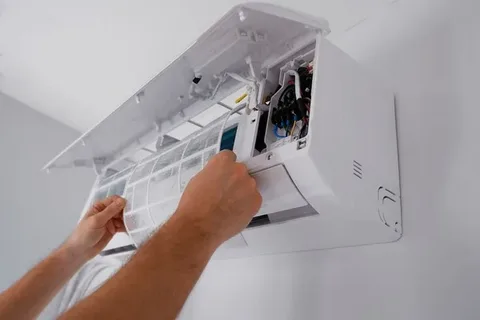Installing an air conditioning system might seem like a routine task, but it comes with real risks if not handled properly. From electrical hazards to incorrect setup that can lead to fires or system failure, ensuring safety during installation should be every homeowner’s priority. A cool home means nothing if it comes at the cost of safety. Whether you’re replacing an old system or setting up a new one, knowing the essentials can help prevent accidents and costly mistakes.
Start With the Right System for Your Home
Not every air conditioning unit is suited for every home. Oversized units can short cycle, consuming unnecessary power, while undersized systems may overwork and overheat. Beyond efficiency, an improperly sized system can stress your electrical setup. Make sure to consult an HVAC professional who will assess your home’s size, insulation, and airflow before recommending a unit. Getting the right fit is not just about comfort—it’s also a key safety step.
Inspect and Prepare Your Electrical System
Air conditioning units require substantial electricity. Before installation day, have a licensed electrician inspect your panel to make sure it can handle the added load. Old or outdated wiring must be updated to prevent overloads, which are a fire risk. Dedicated breakers are often required, and grounding must be checked. Skipping this step can lead to blown fuses, tripped circuits, or worse, electrical fires once your AC starts running during peak heat.
Clear and Secure the Installation Area
Whether the unit is being placed outside or inside your home, the area must be clear, clean, and safe. Remove any debris, furniture, or objects that may obstruct the installation space. This gives technicians safe and easy access, reducing trip hazards or damage to your belongings. For outdoor units, the ground should be level and firm. Uneven surfaces may cause the unit to shift over time, damaging components or refrigerant lines.
Seal Off Hazard Zones During Installation
If you have pets or children, create clear boundaries around the work area. Extension cords, sharp tools, and loose parts can become safety hazards. Installing an AC system often involves handling refrigerants and electrical wiring, both of which should be kept far away from little hands or curious pets. Let your household know when and where work will happen, and keep traffic in those areas to a minimum until the job is complete.
Understand the Role of Proper Ventilation
Ventilation isn’t just about airflow—it plays a critical role in your home’s safety during and after installation. Air conditioners that are installed without proper venting can lead to inefficient cooling or, worse, indoor air quality issues. For example, improper drainage may cause moisture buildup, leading to mold. In more serious cases, misrouted exhausts can push harmful gases back into the home. Ask your installer how the system handles airflow, drainage, and venting before they wrap up.
Watch for Proper Refrigerant Handling
Refrigerants are essential to any air conditioner, but they are also dangerous when mishandled. During installation, these chemicals must be carefully measured, charged, and sealed into the system. Only certified HVAC technicians should be allowed to handle refrigerants due to health and environmental risks. Improper charging can also affect how your AC functions—too much or too little refrigerant can lead to compressor failure or leaks. Always confirm that your installer is EPA-certified and follows proper procedures.
Keep an Eye on Drainage and Condensation
Condensation is a normal part of how air conditioners work, but it must be drained properly. Drainage lines that are clogged or installed incorrectly can back up into your walls or floors, leading to water damage or mold growth. Ask your technician where the drainage exits and how often it needs to be cleaned. They should also test the system to ensure water is flowing away from your home, not into it.
Test the System Before Signing Off
Before you let your technician leave, make sure the system is tested fully. That includes turning it on, checking for airflow in all vents, listening for odd noises, and monitoring the thermostat response. Confirm that all electrical connections are secure and that the unit starts and stops as it should. It’s also smart to ask for a rundown of safety features built into your unit, like auto shut-off sensors or overload protection.
Read the Manual and Safety Instructions
It might not be thrilling, but reading the manual gives you important insight into your new system. Look for safety warnings, maintenance guidelines, and what to do if something goes wrong. Many AC units have reset buttons, specific breaker requirements, or filters that must be replaced on a schedule. Knowing these things helps you respond quickly in case of issues and keeps your warranty valid.
Schedule Routine Maintenance After Installation
Your job doesn’t end after installation. To keep your home safe, your AC system should be inspected and serviced at least once a year. Regular maintenance includes checking electrical connections, cleaning components, inspecting for refrigerant leaks, and ensuring drainage systems are working properly. This isn’t just for performance—it helps catch minor safety issues before they turn into big problems.
Final Thoughts: Safety and Comfort Go Hand in Hand
Air conditioning is all about comfort, but it should never compromise safety. From choosing the right unit to air conditioner installation and supervising the process, every step matters. Trust certified professionals, ask questions, and stay informed. When you treat safety as a priority, you’ll enjoy cool air without any worries. After all, peace of mind is the best thing your new AC system can offer.

